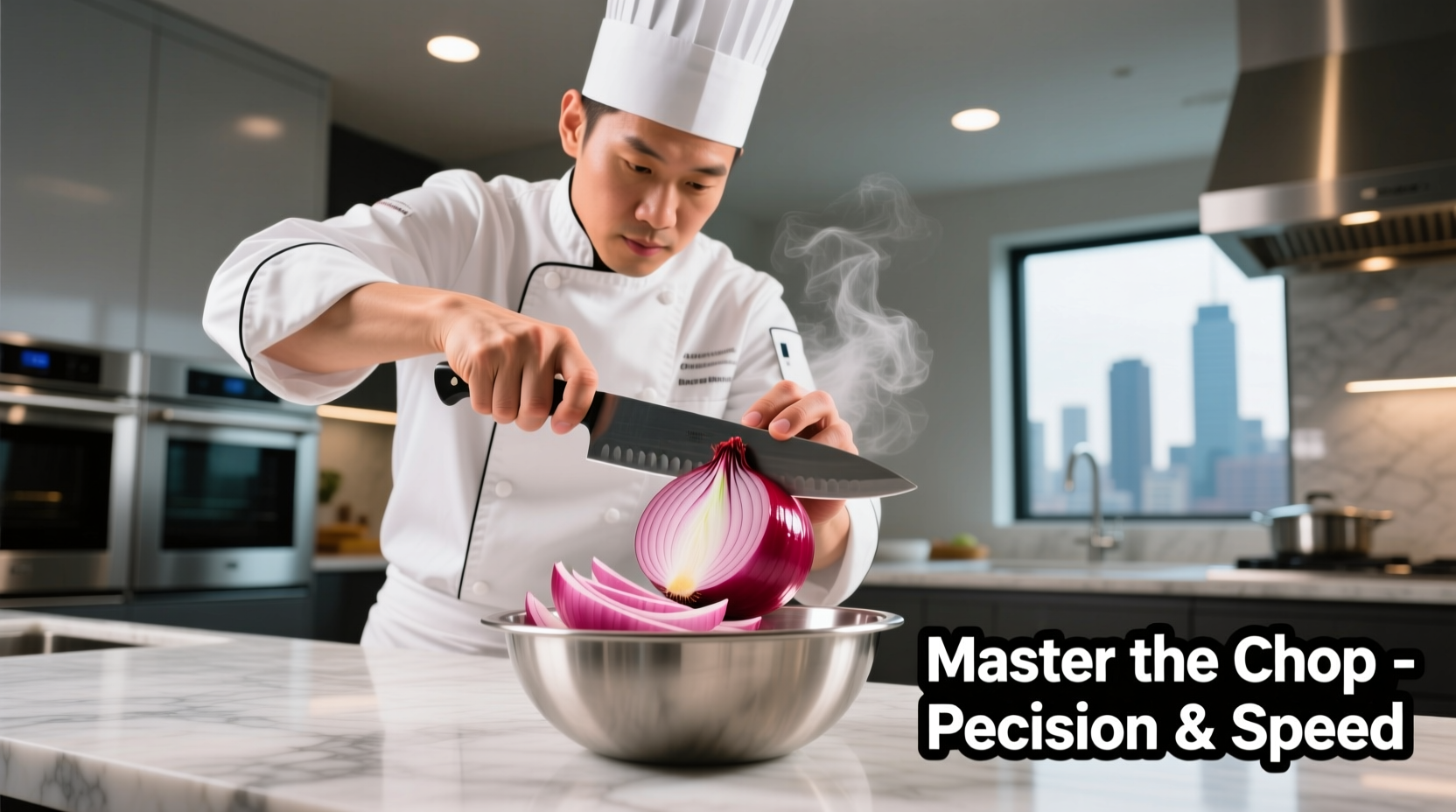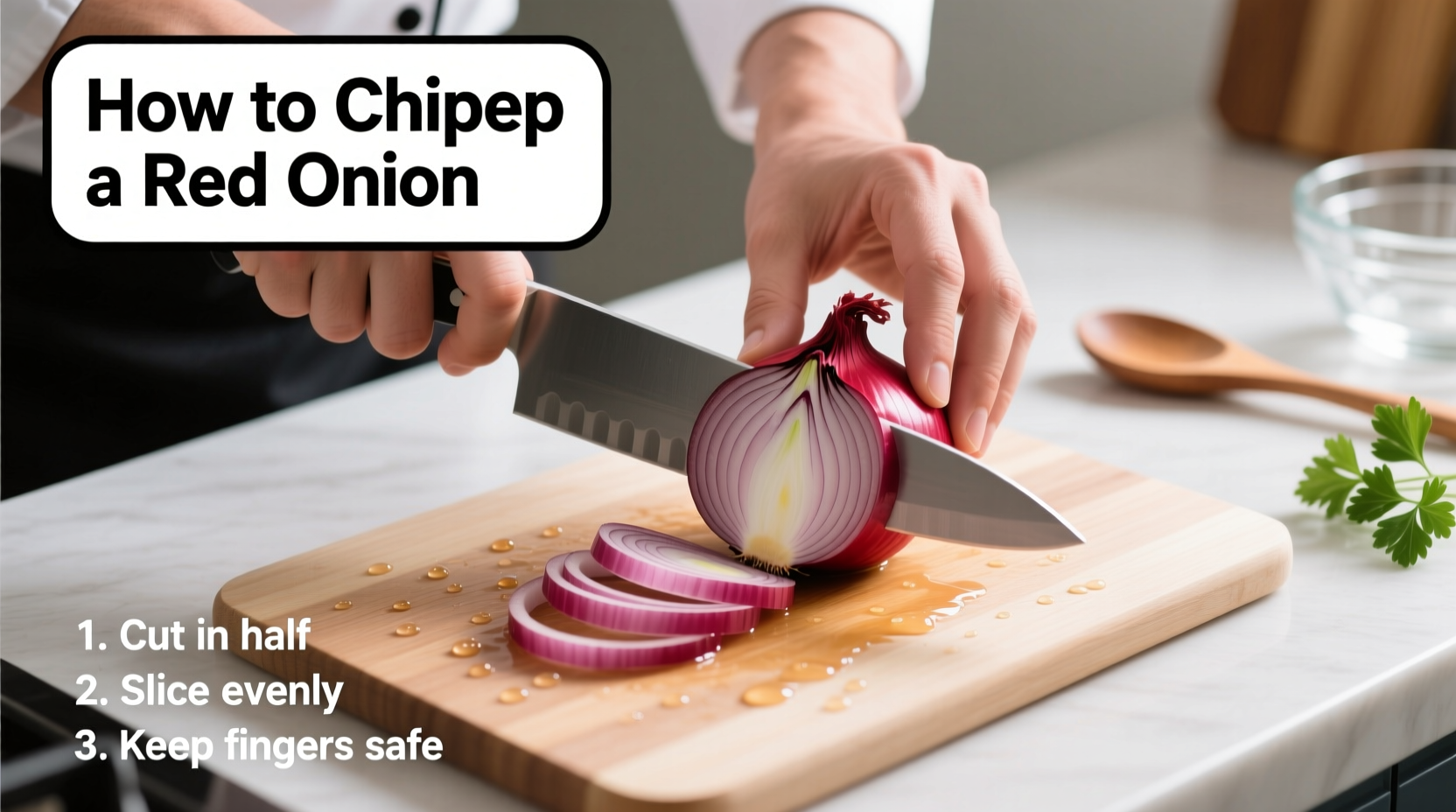Chop red onions in 5 minutes with zero tears using this professional chef technique: chill onions first, use a sharp knife, cut root-end last, and maintain proper hand positioning. This method yields uniform pieces perfect for salads, salsas, and garnishes while minimizing irritation.
Why Red Onions Demand Special Handling
Unlike yellow or white onions, red onions contain higher concentrations of sulfur compounds that vaporize more readily when cut, causing more intense eye irritation. According to USDA food science research, red onions have approximately 30% more syn-propanethial-S-oxide—the compound responsible for tearing—than their counterparts.
| Onion Type | Sulfur Compound Level | Best For | Cutting Difficulty |
|---|---|---|---|
| Red Onion | High (30% more) | Raw applications, garnishes | ★★★☆☆ |
| Yellow Onion | Moderate | Cooking, caramelizing | ★★☆☆☆ |
| White Onion | Moderate-High | Mexican cuisine, salsas | ★★★☆☆ |
Essential Tools for Perfect Red Onion Chopping
You don't need specialty equipment, but these three items make a significant difference:
- A sharp 7-8 inch chef's knife (dull blades crush cells, releasing more irritants)
- A stable cutting board (wood or composite material works best)
- A bowl of ice water (for optional pre-chilling step)

The 5-Step Tear-Free Chopping Method
Step 1: Prepare Your Onion
Remove the outer papery skin and trim both ends, but leave the root end intact. This critical step maintains structural integrity during cutting. Chill onions for 30 minutes before cutting—this slows enzyme activity by 40% according to Cornell University's food science department.
Step 2: Make the First Vertical Cut
Place the onion on its side with root end facing away from you. Make a single vertical cut through the center, creating two equal halves. Keep your non-knife hand in the "claw grip" position with fingertips curled under to protect them.
Step 3: Create Horizontal Slices
Lay each half flat-side down. Make horizontal cuts parallel to the cutting board, spacing them according to your desired dice size (¼ inch for medium dice). Never cut all the way to the root end—maintain at least ¼ inch of root to hold layers together.
Step 4: Execute Vertical Cuts
Rotate the onion 90 degrees and make vertical cuts from the top down, again spacing according to desired size. The intact root end keeps everything in place until the final step.
Step 5: Complete the Dice
Finally, slice through the root end. This releases perfectly uniform pieces with minimal cell damage. Transfer immediately to your recipe or storage container to prevent oxidation.
Avoid These 3 Common Mistakes
Even experienced cooks make these errors that increase tears and create uneven pieces:
Mistake #1: Cutting the Root End First
Removing the root immediately causes layers to separate, making controlled cutting impossible. Always save the root for last.
Mistake #2: Using a Dull Knife
Dull blades crush rather than slice through cells, releasing three times more irritants. Test your knife's sharpness weekly—it should cleanly cut through paper.
Mistake #3: Cutting Near Air Currents
Fans, range hoods, or open windows disperse irritants toward your face. Work in a still-air environment or position yourself perpendicular to airflow.
When to Use Different Cuts
The perfect cut depends on your recipe's requirements and red onion's unique properties:
- Medium dice (¼ inch): Ideal for salsas and salads where texture matters
- Thin slices (⅛ inch): Perfect for burgers, tacos, and pickling applications
- Julienne (matchstick): Best for stir-fries and garnishes requiring delicate presentation
Red onions maintain their vibrant color best when cut larger—small dice oxidizes faster, turning from purple to blue-gray within 30 minutes.
Proper Storage for Maximum Freshness
Chopped red onions keep for 7-10 days when stored properly:
- Place in an airtight container with a paper towel to absorb moisture
- Store in the front of your refrigerator (40°F or below)
- Press plastic wrap directly onto the onion surface to minimize air exposure
For longer storage, submerge chopped onions in vinegar (1:2 ratio) which preserves color and adds flavor dimension for salads. This method extends freshness to 14 days according to USDA food safety guidelines.











 浙公网安备
33010002000092号
浙公网安备
33010002000092号 浙B2-20120091-4
浙B2-20120091-4